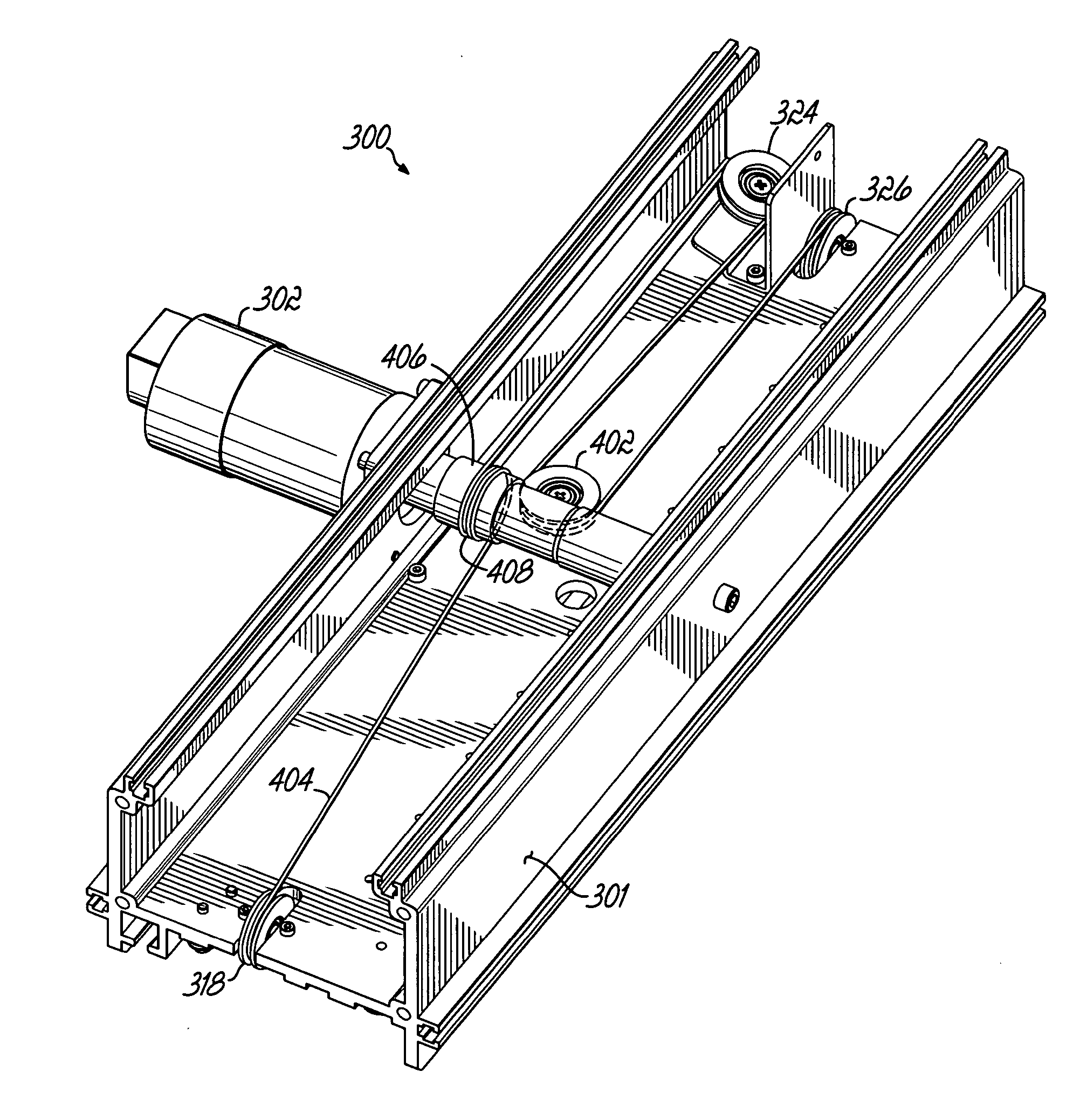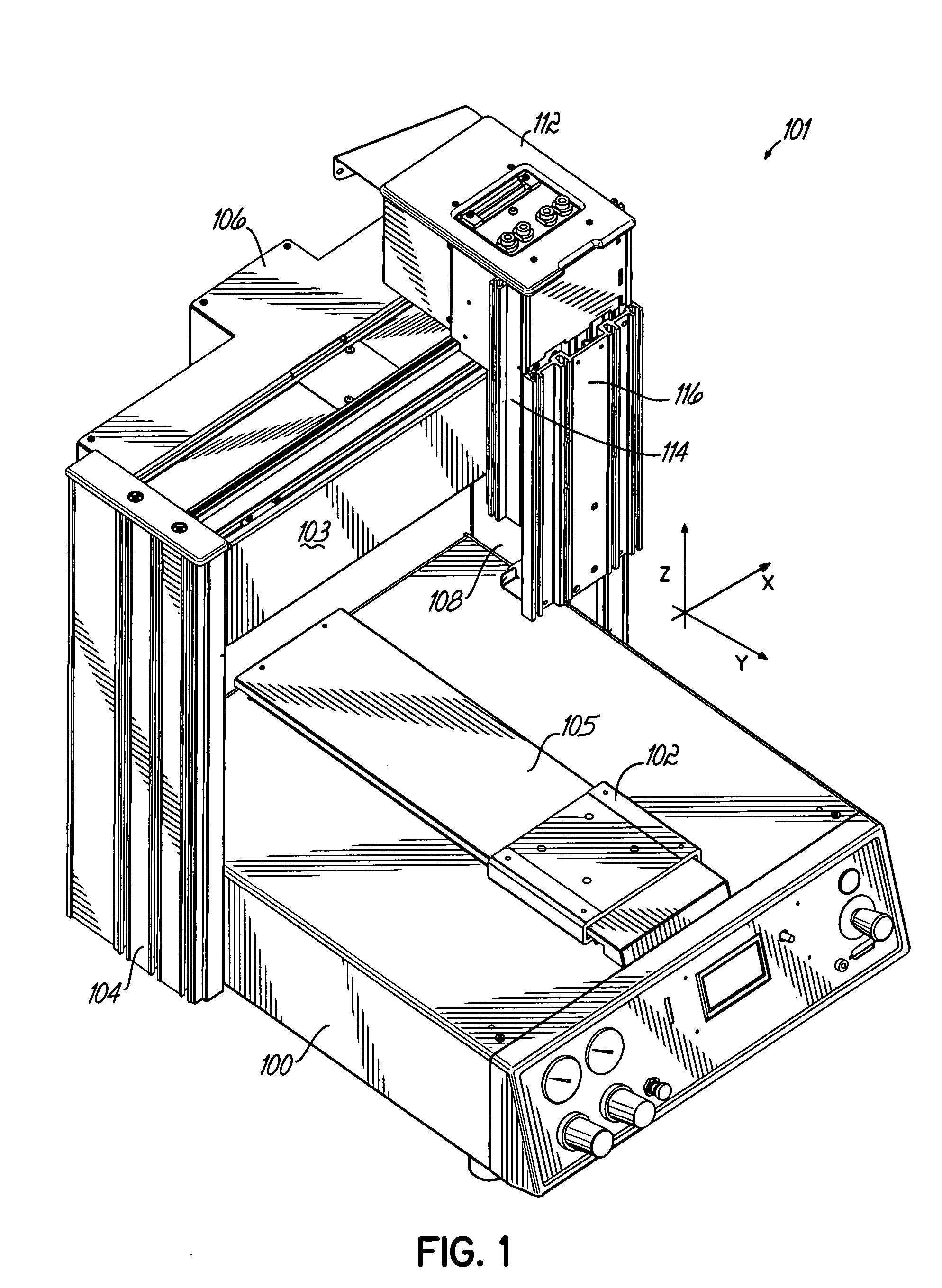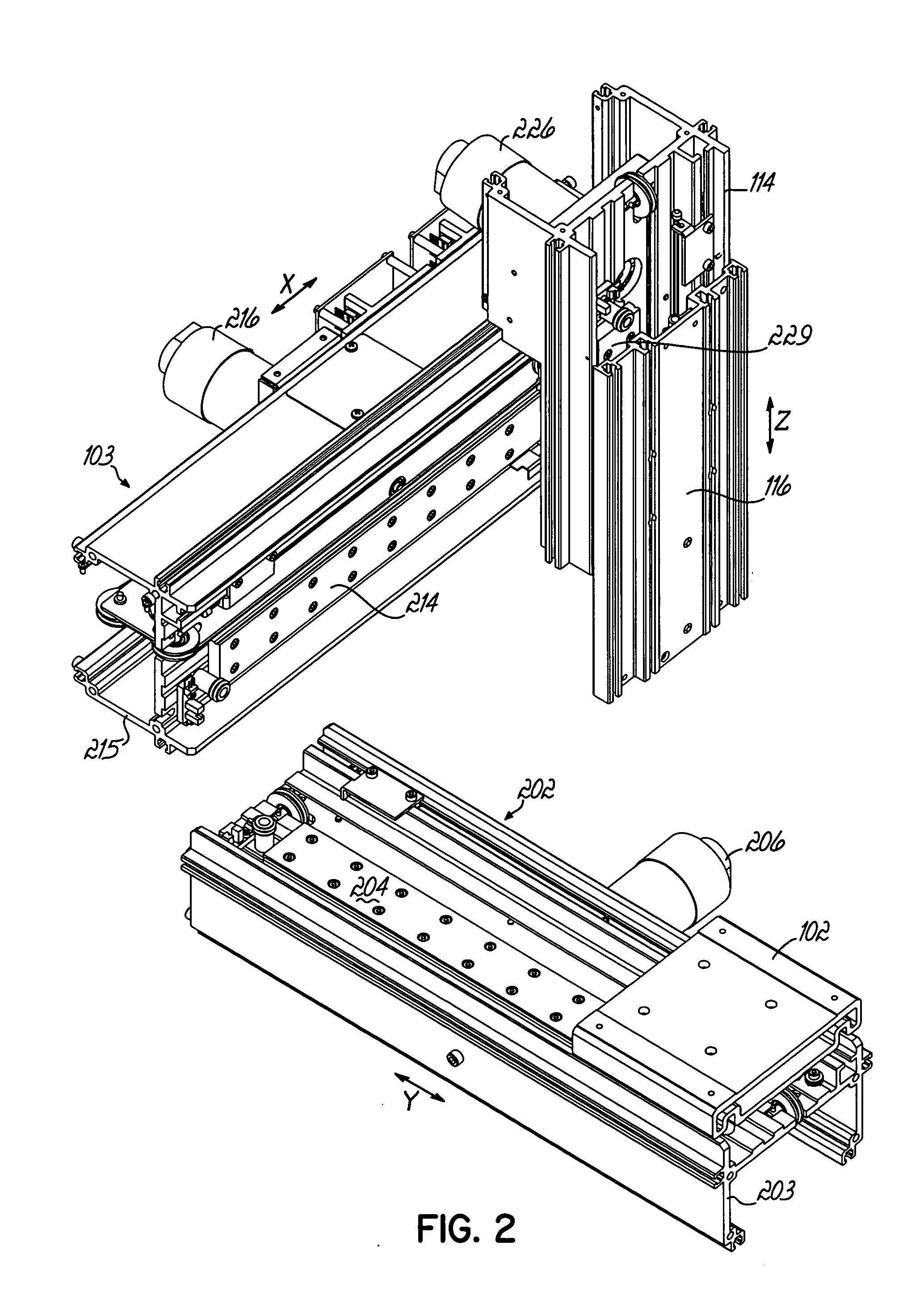Modular motion unit with tensioner
a technology of tensioner and module, applied in the field of precision positioners, can solve the problems of increasing design complexity and cost, difficult to change the range of motion and travel range of the robot, etc., and achieve the effect of convenient design and construction
- Summary
- Abstract
- Description
- Claims
- Application Information
AI Technical Summary
Benefits of technology
Problems solved by technology
Method used
Image
Examples
Embodiment Construction
[0018]FIG. 1 illustrates a positioner unit, or robot, that includes three modular motion units assembled on a frame. FIG. 2 illustrates the same arrangement of the modular motion units without the frame structure being depicted. While precision positioner units of various sizes and capabilities are contemplated by the present invention, one exemplary positioner unit operates at acceleration forces of approximately ¼ g, provides positional accuracy to about 5 mils and positional repeatability of about 2 mils.
[0019] Referring to FIGS. 1 and 2, the positioner unit 101 includes a base 100, that in this instance houses the computer control assemblies and other electronic circuitry of the robot. With respect to the modular motion units, the base 100 provides a place to mount one of the modular motion units. Although obscured by the base 100 and the splash guard 105, in this drawing, the modular motion unit is oriented so as to extend from the front of the base 100 to its rear and allows ...
PUM
 Login to View More
Login to View More Abstract
Description
Claims
Application Information
 Login to View More
Login to View More - R&D
- Intellectual Property
- Life Sciences
- Materials
- Tech Scout
- Unparalleled Data Quality
- Higher Quality Content
- 60% Fewer Hallucinations
Browse by: Latest US Patents, China's latest patents, Technical Efficacy Thesaurus, Application Domain, Technology Topic, Popular Technical Reports.
© 2025 PatSnap. All rights reserved.Legal|Privacy policy|Modern Slavery Act Transparency Statement|Sitemap|About US| Contact US: help@patsnap.com



